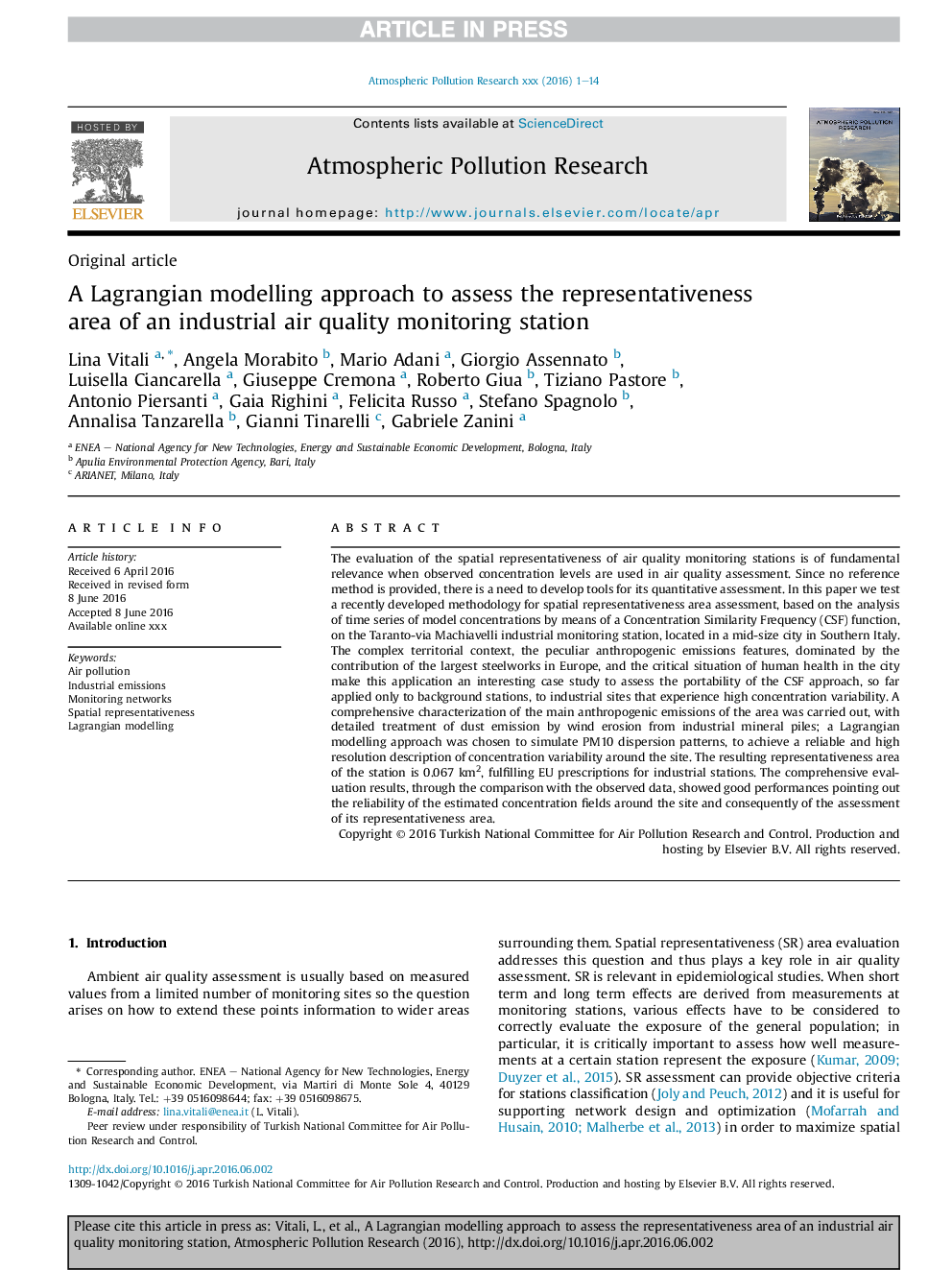| Article ID | Journal | Published Year | Pages | File Type |
|---|---|---|---|---|
| 8862814 | Atmospheric Pollution Research | 2016 | 14 Pages |
Abstract
The evaluation of the spatial representativeness of air quality monitoring stations is of fundamental relevance when observed concentration levels are used in air quality assessment. Since no reference method is provided, there is a need to develop tools for its quantitative assessment. In this paper we test a recently developed methodology for spatial representativeness area assessment, based on the analysis of time series of model concentrations by means of a Concentration Similarity Frequency (CSF) function, on the Taranto-via Machiavelli industrial monitoring station, located in a mid-size city in Southern Italy. The complex territorial context, the peculiar anthropogenic emissions features, dominated by the contribution of the largest steelworks in Europe, and the critical situation of human health in the city make this application an interesting case study to assess the portability of the CSF approach, so far applied only to background stations, to industrial sites that experience high concentration variability. A comprehensive characterization of the main anthropogenic emissions of the area was carried out, with detailed treatment of dust emission by wind erosion from industrial mineral piles; a Lagrangian modelling approach was chosen to simulate PM10 dispersion patterns, to achieve a reliable and high resolution description of concentration variability around the site. The resulting representativeness area of the station is 0.067Â km2, fulfilling EU prescriptions for industrial stations. The comprehensive evaluation results, through the comparison with the observed data, showed good performances pointing out the reliability of the estimated concentration fields around the site and consequently of the assessment of its representativeness area.
Keywords
Related Topics
Physical Sciences and Engineering
Earth and Planetary Sciences
Atmospheric Science
Authors
Lina Vitali, Angela Morabito, Mario Adani, Giorgio Assennato, Luisella Ciancarella, Giuseppe Cremona, Roberto Giua, Tiziano Pastore, Antonio Piersanti, Gaia Righini, Felicita Russo, Stefano Spagnolo, Annalisa Tanzarella, Gianni Tinarelli,
